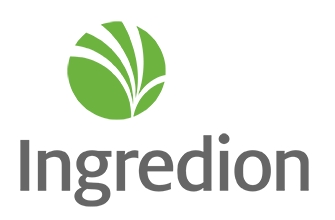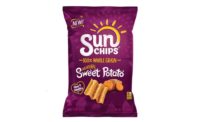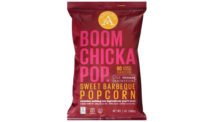If there’s one trend that touches nearly every area of the food industry—from formulation to marketing, from ingredients to finished products—it’s clean label. But unlike certifications such as USDA Organic or Non-GMO Project Verified, the term “clean label” does not have a set definition or set of criteria. As a result, consumers and brands can assign any definition aligning with their particular values to this term, which may at least partly explain its popularity.

Awareness of product factors related to clean or clear labeling has spread to the mainstream. According to the 2016 “Food and Health” survey from the International Food Information Council (IFIC), aspects related to clean-label foods continue to factor into dietary decisions. When asked how they define a “healthy eating style,” 41 percent of respondents chose “limited or no artificial ingredients or preservatives.” Also, when making a purchasing decision, IFIC found that almost half of respondents (47 percent) look at the ingredients list. When asked to define “natural” food, 29 percent of respondents in the IFIC survey said “natural” is “associated with having no preservatives or additives.”
Manufacturers and formulators tend to agree that, currently, the most-common definition of clean label, however informal it may be, seems to be based on the foundation of simple and shorter ingredients lists made up of “recognizable” ingredients.
According to Catherine Barry, director of marketing, National Honey Board, Firestone, CO, it’s important that ingredients lists feature “ingredients that consumers can buy in a store and ingredients that they have in their own pantry. An ingredient that is recognizable is key, as is an ingredient with a positive perception.”
Walter Postelwait, president, Pak Group LLC, Pasadena, CA, notes that recognizable ingredients are integral to the clean-label trend, because they are strongly associated with being “natural.” This means that even natural ingredients with chemical-sounding names (think ascorbic acid) may be on the chopping block, because consumers “may perceive the product to contain artificial ingredients,” he says, which is a negative attribute directly at odds with the clean-label trend and consumer trends overall.
In fact, according to Mintel’s “Better-For-You Eating Trends: Spotlight on Real—U.S.” report from September 2016, 43 percent of consumers across all generations avoid artificial sweeteners when shopping for healthy foods, 38 percent avoid artificial preservatives and 35 percent avoid artificial flavors.
Expanding definition
While at this point in the clean-label journey there is a definition that is generally agreed upon by formulators, brands and consumers, like any trend, the big picture is constantly developing.
At Parker Products, Fort Worth, TX, Chelsea Rowell, research and development, has noticed consumer focus expanding from simple and natural ingredients to also include how foods are processed. “For example, consumers may prefer evaporated cane juice over cane sugar, even though both are essentially clean ingredients—sugar—because the evaporated cane juice is closer to its organic state since it has not undergone a whitening process,” she says. “To take it one step further, consumers may choose a brand of evaporated cane juice that is sustainably sourced over one that isn’t.”
Brandy Gamoning, marketing manager, NestFresh, Denver, is noticing something similar: While the primary approach to clean labels may be rooted in ingredients, consumers’ demands are expanding to also include clean processing and sustainable sourcing. “More than ever, transparency is central to the clean-food movement and is a must for any clean labels,” she says. “Consumers who are educating themselves about the food industry and the ways they feed their families drive this long-term need for transparency. With information about food production becoming more accessible, transparency is becoming increasingly important to consumers who want to know that their food was produced in the best way possible.”
This is all a result of education, suggests Jon Peters, president, BENEO, Inc., Morris Plains, NJ. It’s not necessarily that the definition of clean label is changing, he points out, but rather that consumers have a growing interest in what they’re eating overall. “Clean label is no longer a trend, it is a must for brands trying to meet the needs of this growing consumer segment,” he says. “Food manufacturers then need to work on modifying their recipes and how they can best be ‘cleaned up.’”

Targeting opportunities
Going forward, opportunities for growth exist in extruded snacks, explains Chad Rieschl, senior research technologist, Cargill, Minneapolis, because they can deliver on consumer expectations for “healthy ingredients, trendy flavors and interesting textures,” he says. “Creative product developers are using natural fibers, unique proteins and blends of proteins, and oil and oil blends to create distinct products that stand out in the marketplace.”
Peters points toward opportunities for applications that have a direct connection to health and wellness, such as cereal bars. Formulations that include less sugar without resorting to artificial sweeteners are also on trend. Looking ahead, he suggests that applications specific to kids’ nutrition, “where transparency and food safety are paramount, to continue to be an area of focus.” He also notes that bakery items will have an increased focus on natural colors and flavors.
Ingredient specifics
“Removing artificial colors, flavors, and preservatives, high-fructose corn syrup and partially hydrogenated oils is a big first step,” says Andrew Blok, brand director, La Brea Bakery, Los Angeles. Next, formulators can focus on “understanding the sourcing of your ingredients and that they were grown responsibly.” In 2016, La Brea Bakery launched its Reserve line, made with single-origin, sustainable, heirloom wheat grown on a small family farm.
Rowell also recommends evaluating the sub-components of the raw materials being used. “Opt for inclusions that utilize minimal ingredients with little to no processing,” she says. “To reach the peak level of clean label, use sustainably sourced ingredients in their organic state.”
This illustrates the expansion of natural, organic and/or sustainable pantry staples to prepared foods, like bakery items. One case in point is cage-free eggs, an approach increasingly adopted by large food manufacturers working in the bakery market. Nestlé and Mondelēz International have committed to using only cage-free eggs in its U.S. products by 2020, and General Mills set its target for transition to 100 percent cage-free as 2025.
“The popularity of cage-free eggs reaches all areas of the food industry, from the CPG category to bakery items to fast-casual restaurants,” says Gamoning. “Consumers are choosing cage-free, organic, non-GMO, free-range and pasture-raised eggs for their homes and want to see these same eggs being used in the packaged food they buy, as well.” Cage-free NestFresh eggs are available in liquid, dried, frozen and other formats.
Doubling-up on benefits can have a cumulative effect, such as highlighting the positive aspects of sourcing transparency and nutritional benefits. Thomas J. Payne, industry consultant, U.S. Highbush Blueberry Council, Folsom, CA, notes consumers sometimes express concern regarding the origins of ingredients. Fruit like blueberries, he says, “contains many naturally occurring antioxidants, such as vitamins C and E.” And when that fruit is also grown in America, it gains added appeal.
Along these same lines, ingredients like honey remain appealing, since “every consumer is familiar with honey and understands it comes from flowers and bees, and is not processed in a manufacturing facility,” says Barry. “Clean label is no longer a trend. It’s more of a formulation requirement. So we believe every bakery and snack category will see growth in the number of new products with cleaner labels.”

Ingredient checklist
Walter Postelwait, president, Pak Group, suggests that snack food and bakery companies should seek to replace any ingredient that is not recognized as natural or authentic. Here’s his list of top offenders:
DATEM (diacetyl tartaric acid ester of mono- and diglycerides)
What it is: Emulsifier and dough conditioner that strengthens bread and provides a fine crumb structure.
Why it’s replaceable: According to Postelwait, “Its chemical-sounding name does not resonate as all-natural.”
Vital wheat gluten
What it is: Bakery product strengthener.
Why it’s replaceable: Though natural, Postelwait suggests it doesn’t resonate as authentic with many consumers.
SSL (sodium stearoyl lactylate)
What it is: Dough strengthener and crumb-softener, chemically synthesized from lactic acid, stearic acid and sodium hydroxide.
Why it’s replaceable: Its benefits can be achieved via enzyme technology, instead, says Postelwait.
Potassium bromate
What it is: Bread dough volumizer.
Why it’s replaceable: “This ingredient has been proven to be a carcinogen and is presently banned in several states,” Postelwait says. “Though it is banned in some places, it is still used today in many bakeries in the Eastern half of the United States that primarily focus on breads for foodservice use.”
ADA (azodicarbonamide)
What it is: Dough conditioner and flour whitening agent.
Why it’s replaceable: Made famous when Subway removed it from its breads, “there are studies that indicate that in high doses it may cause health problems in mice,” Postelwait says. “This ingredient, like potassium bromate, has been proven to be a carcinogen and is banned from use in many countries.”

Ever-evolving clean-label solutions
As clean-label considerations continue to grow more prevalent in mainstream U.S. society, more bakers are reaching out to the supply chain for answers. We sought some insight from Jeff Nelson, Western vice president of sales, Brolite, Streamwood, IL.
Douglas J. Peckenpaugh: What does “clean label” mean to you?
Jeff Nelson: Clean label is an ongoing movement within the food segment striving to remove artificial chemicals from the food chain. It has been an ongoing movement that has finally gotten to the baking industry and is affording us many challenges—but also many opportunities.
DJP: Has the definition of clean label changed for the average consumer?
JN: Due to the vast amount of information available to consumers, they have become much more knowledgeable about food and food ingredients. The definition changes from consumer to consumer, and it continues to evolve. As bakers, we need to respond to this evolution. We need to become more knowledgeable, to change and to grow with the consumers.
DJP: How does this definition change for the natural and organic consumer?
JN: Since organic has a clear certification system in place, not as many changes have been made in organic products—but “natural” products are a continuing evolution. This is the area offering the most growth opportunities for bakers and supplier alike.
DJP: What are the top ingredients of concern for clean-label baked goods?
JN: We’ve been replacing emulsifiers, oxidizing agents, reducing agents, mold inhibitors, and artificial flavors and colors.
DJP: What challenges arise when removing these ingredients?
JN: The biggest challenges are product tolerance and processing on high-speed lines. Another challenge arises when there are multiple ingredients to replace on a singular formula. Replacing one ingredient may not cause an issue, but replacing three or four can be a challenge.
DJP: How what are some clean-label replacements for these ingredients that are available to bakers?
JN: Brolite offers many alternative to both clean-label and organic bakers. We work closely with the baker to give them the alternatives that are most suited for their unique application.








